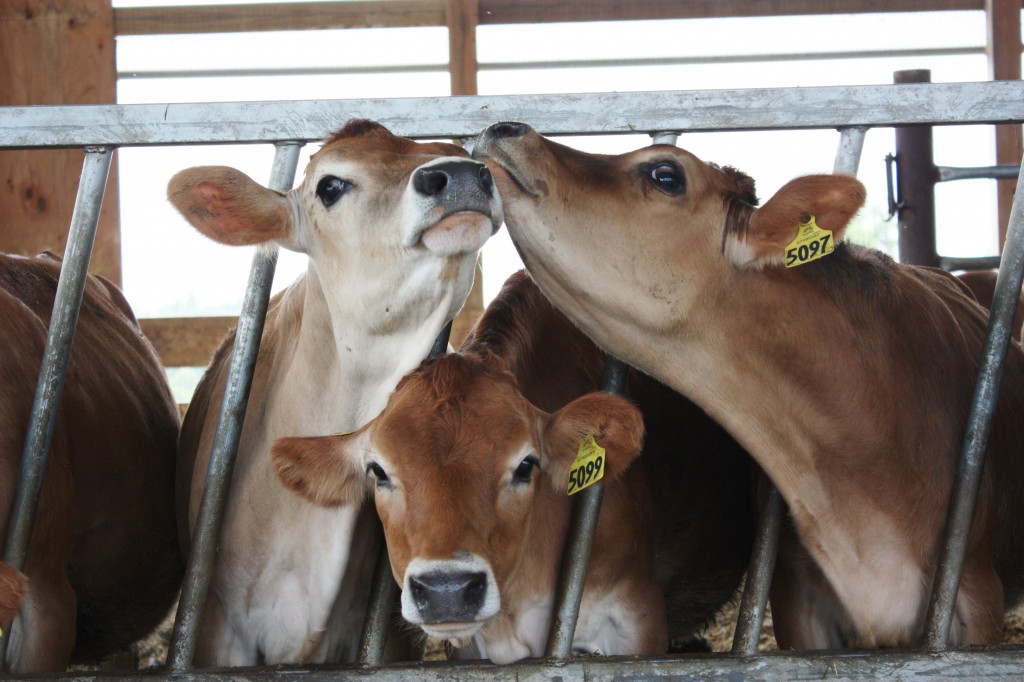Kirk Shoen
Rensselaer County
As we complete some of the 2013 Dairy Farm Business Summaries we are finding many of our farmers happy with last year’s income. Dairies are seeing some of the best margins they have had in years. Stable, relatively high prices have made 2013 a near record year. The forecast for milk and milk prices looks even better as I write this article. The question is not will these highs last but, how long will they last? If you graph the milk price over the last 20 years, the current milk price is near the statistical high. Corn prices on the other hand are closer to the low end after having a record run. History dictates that numbers will always travel back toward the average. At the end of 2012 it was hard to imagine that corn prices would come down very farm from record highs. Many people thought the price would come down, but not as fast as it did, and did not expect it would stay down this long. USDA is estimating crop farmers could see as much as a 27% drop in net farm income for 2014 (www.ers.usda.gov).
We can take something away from the corn market. Milk prices will come down and when they do farmers should be in a position to ride out the storm. When things are good the pressure to measure, manage and improve is lifted. Farmers have tendency to abandon their management, marketing and financial strategies. There are a few things to think about when positioning your farm for the future.
Take stock of where you are, where you have been and where you want to be in 10 years. The first step is to do a 2013 farm business summary and review it carefully. How well did you do? Was the profitability of the farm due only to the price of milk or because you made efficiency improvements? A hefty bottom line in the check may give a false sense of farm profitability. Review the last 5 years. What happened? Has the farm been up and down with the market? What strategies worked or didn’t? Project out your operating costs and profits. Use higher costs and lower profit numbers to help identify your margin range. Use the information to build a plan for 1 year, 5 years, 10 years out. This may be a good time to think about a transition plan.
Don’t abandon your milk marketing strategies or plan. When the price is good, it’s easy to ride the market or lament your losses if you have contracted or used some type of risk management strategy. A milk marketing strategy shouldn’t be based on gaming the market. It should be used to cover your cost of production and a small margin through the bad times. You should be making decisions now for what future prices may be. Even if it hurts a little when prices are high, a good marketing strategy can take the sting out of a bear market and even-out large swings in your margins.
Review your financial position. Look at all of your borrowing practices. Have you been over using loans to support the business? Work with your lender to pay off or refinance high interest loans. Pay off any extra ordinary loans like credit cards or supply store accounts. Build up savings or cash to use in the future. Review your personal accounts and put money into savings or retirement accounts. Maintain a good relationship with your lender. You may need them in a few years.
Analyze your operation using your summary and an on-farm review. If you haven’t already, do a yearly review with your employees. Determine if any of them need to be let go or if there are indications that they may be looking elsewhere. You need to have the stable, trained employees if times get tough. Poor employees or the loss of a key team member will take a toll if you need every milk dollar. Take a look at your herd. It’s easy to let a few slackers stay way too long when you want every pound you can get. It may be time to cut poor or extra animals out of your calf and heifer groups while prices are good.
Don’t get crazy. Everyone thinks about building and buying when times are good. Look at your long-term farm plan. Are building barns or buying land and equipment part of the old plan or just since the price increase? What does your past history tell you–can you afford to make the payments if prices drop?
It would be nice if prices did remain high and stable for a while to help farmers rebuild, but that may be wishful thinking. Being prepared for the worst is a better option.
Feel free to contact me with any of your agriculturally related questions.
Kirk Shoen
kjs264@cornell.edu
(518) 272-4210
Sources: Progressive Dairyman, February 7, 2014 Vol. 28 No.3



